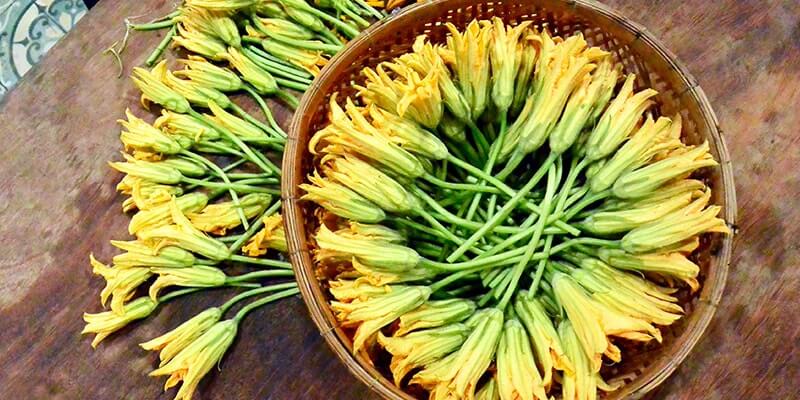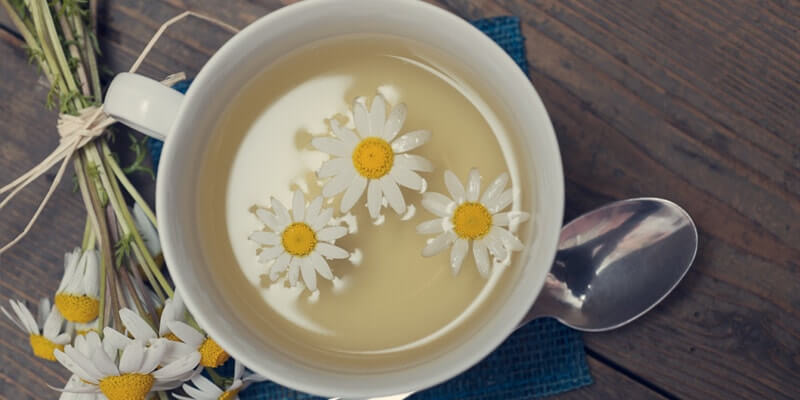by The Puritan's Pride Editorial Team
There is nothing quite like the satisfaction of growing your own food. Fruits, vegetables and fresh herbs are abundant in home gardens this time of year. The next time you head out to harvest your crop of yummy eats, take a second glance at some of the other beneficial treats you may be overlooking right in your own garden.
When you get ready to pick some squash (or zucchini) take a look at the big yellow flowers. Have you ever thought of eating them? Experienced gardeners know that squirrels and rabbits find them irresistible. The truth is the little garden pests are onto something; squash blossoms are actually quite delicious. They are delicately sweet with a slightly herbal taste and the stems add a bit of crunch. They are fantastic added to a salad raw, but most squash blossom recipes call for stuffing them (usually with cheese and herbs) and then frying or baking them. While still delicious, frying or baking may sap some of the subtle flavor, but the crisp shell is undeniably beautiful.

Squash blossoms aren’t the only edible flowers showing up on menus around the country. Other edible flowers add color and unique flavor to recipes. Chive blossoms are not only pretty; they are deliciously piquant, adding a subtle spice to your favorite dishes. The delicate purple blossoms have tiny petals that can be sprinkled over any dish to add a light, onion-like flavor.
If you grow your own chive blossoms, you might want to try a fresh, fun chive blossom tempura recipe. Check out the recipe at https://theseasonalgourmet.ca/2010/05/26/tempura-chive-blossoms/.
Take a Look at our Spices & Herbs
For a saffron-like spice, you may want to add some petals from Calendula flowers to your favorite dishes. Calendula flowers are brightly hued daisy-like blooms that are sometimes called English Garden Marigolds. Chefs snip the petals of calendula into rice dishes to add a saffron-like taste and color. Calendula has a spicy, peppery flavor and it adds a bright golden hue to recipes. If you don’t grow your own, look for calendula blossoms in the produce section of the supermarket. Some specialty health food stores sell dried organic calendula petals that you can use the same way you would use saffron.
Besides savoring the flavor of calendula petals or enjoying their vibrant beauty in the garden, you can also enjoy calendula as a popular ingredient in skin care and body care products.

People around the world have sipped millions of cups of herbal chamomile tea in an effort to help soothe a hectic day, so it is not surprising to learn that as an herbal supplement, chamomile can boast that it is one of the oldest, most widely used herbal plants in the world.1
There are two basic varieties of chamomile that are used for culinary or herbal applications. German chamomile (Matricaria chamomilla) and Roman chamomile (Chamaemelum nobile) are both widely used throughout the world. The versatile Chamomile plants have enjoyed varied uses throughout history. Some cultures use the leaves of the Roman chamomile as an herbal spice that is typically chopped up and added to butter, cream sauce or sour cream. It’s delicious on baked potatoes. Parts of the plant are also utilized to brew herbal chamomile beer.
The petals of both varieties can be shredded and added to a salad as a colorful garnish. The flavor can be compared to a sweet and delicate apple-like essence. Dried flowers of both varieties are commonly used to brew chamomile tea. Which one you prefer is a matter of taste. The German chamomile is slightly sweeter than Roman chamomile, which has been known to exhibit a slightly bitter bite.2
In addition to culinary uses, Chamomile is found in all sorts of aromatherapy products, soothing creams, and herbal supplements.
If you aren’t growing these flowers organically in your own garden, you can look for edible flowers in the produce section of your grocery store or at your local farmer’s market. Remember that before you sample anything know where it comes from and what can be on it – pesticides, fertilizers, etc. And, check reference guides before you consume any flowers because there are serious consequences if you don’t know what you are eating. Seasonal allergy sufferers should also be very cautious before ingesting any flowers, especially chamomile because the pollen is quite potent.3
At the very least, growing beautiful herbs and flowers will get you active and hopefully enjoying the great outdoors. When you watch your garden evolve from bare ground to a patch of land lush with ripe produce and beautiful flowers, you’ll gain a sense of satisfaction. Many gardeners report that gardening is a relaxing and stress-relieving activity. Caring for the plants also offers the entire family a chance to work together, so this season get out there and get your hands dirty.